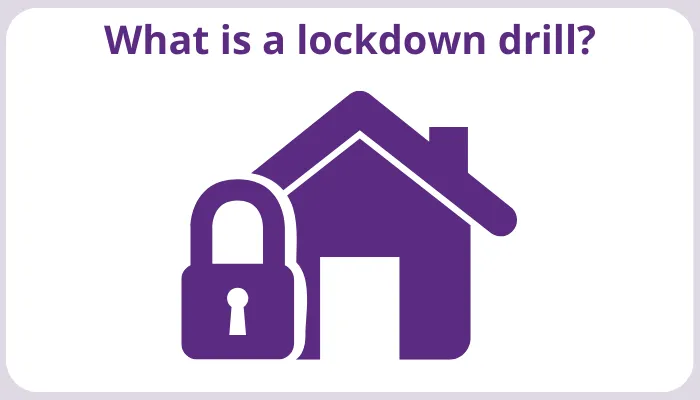Every child's well-being matters.
Case Review Articles
Quick access:
VICTIMS
ADULT ACTIONS
Alison Kelly – data issue
Amina Noor (FGM)
Quick access:
VICTIMS
ADULT ACTIONS
Alison Kelly – data issue
Amina Noor (FGM)

What is a lockdown drill in early years?
Lockdown drills in early years education are designed to prepare young children for potential emergencies that require securing the building and protecting everyone inside. Conducting lockdown drills for young children requires a thoughtful approach that balances the need for safety with the developmental and emotional needs of the children.
A lockdown drill in early years education begins with clear and straightforward communication. Practitioners use developmentally appropriate language to explain the purpose and procedure of the drill to the children. This communication is crucial in ensuring the children understand what is happening without causing undue fear or anxiety. The language used is often reassuring and focuses on practising to stay safe, much like fire drills or other safety practices.
The procedure of a lockdown drill is straightforward but carefully planned. The drill typically starts with a specific signal or announcement, indicating it is time to begin the lockdown. Upon hearing the announcement, children are guided to a designated safe area in the building. This secure area is usually away from windows and doors, where children can sit quietly and remain out of sight. The doors are then locked, lights turned off and curtains and blinds closed if necessary, creating a secure environment.
During the drill, maintaining quietness is critical. Children are instructed to remain quiet and still, which helps them stay calm and focused. Practitioners should model this, as their calm demeanour and reassuring presence can help alleviate any anxiety the children might feel. It is important explain why they should stay quiet and still, emphasising that these actions are part of the practice to ensure everyone's safety.
Repetition and practice are key elements in the effectiveness of lockdown drills. This allows children to become familiar with the process. This familiarity helps reduce panic and confusion in a real emergency. Each drill is an opportunity to reinforce the steps and procedures, making them second nature to the children and staff. Regular practice also provides a chance to identify and address any issues or concerns that may arise during the drills.
Parental involvement is another crucial aspect of successful lockdown drills. Nurseries and preschools should communicate with parents about the purpose and procedures of the drills. This communication helps parents understand what their children are experiencing and gives them the tools to discuss the drills at home. Parents can reinforce the importance of the drills in a way that aligns with the setting’s approach, helping reduce the children's fear and anxiety.
After each drill, practitioners engage in a post-drill discussion with the children. This debriefing session is integral to the process, allowing children to ask questions and express concerns. Reassurance is provided as well as further explaining the importance of the drill. This discussion helps children process the experience and reinforces that the drills are a practice to keep them safe.
The primary purpose of lockdown drills in early years education is to ensure the safety and preparedness of children and staff. These drills help build a routine and familiarity with emergency procedures, reducing the likelihood of panic in an emergency. Additionally, they help children feel more secure by knowing there are plans to protect them. The confidence gained through these drills can have a lasting impact on children, providing them with a sense of safety and security in their environment.
AUTHOR:- Iona has nearly 10 years of experience supporting nurseries and childminders in curriculum planning, leadership, and safeguarding. Her writing is informed by public information and sector insight, aiming to provide accessible, practical support for professionals working with children. She is part of the On the Button team, helping deliver Well-being, Safeguarding and Complaint Management Software that empowers practitioners to identify concerns early and act confidently.
On the Button provides innovative software tailored to the needs of the early years sector, with a strong focus on EYFS well-being and early years safeguarding. Our tools help senior practitioners to confidently track concerns, maintain robust records, and respond effectively — all while meeting statutory guidance. From early years complaint management to team-wide safeguarding alerts, our platform puts children's safety and emotional health first.

What is a lockdown drill in early years?
Lockdown drills in early years education are designed to prepare young children for potential emergencies that require securing the building and protecting everyone inside. Conducting lockdown drills for young children requires a thoughtful approach that balances the need for safety with the developmental and emotional needs of the children.
A lockdown drill in early years education begins with clear and straightforward communication. Practitioners use developmentally appropriate language to explain the purpose and procedure of the drill to the children. This communication is crucial in ensuring the children understand what is happening without causing undue fear or anxiety. The language used is often reassuring and focuses on practising to stay safe, much like fire drills or other safety practices.
The procedure of a lockdown drill is straightforward but carefully planned. The drill typically starts with a specific signal or announcement, indicating it is time to begin the lockdown. Upon hearing the announcement, children are guided to a designated safe area in the building. This secure area is usually away from windows and doors, where children can sit quietly and remain out of sight. The doors are then locked, lights turned off and curtains and blinds closed if necessary, creating a secure environment.
During the drill, maintaining quietness is critical. Children are instructed to remain quiet and still, which helps them stay calm and focused. Practitioners should model this, as their calm demeanour and reassuring presence can help alleviate any anxiety the children might feel. It is important explain why they should stay quiet and still, emphasising that these actions are part of the practice to ensure everyone's safety.
Repetition and practice are key elements in the effectiveness of lockdown drills. This allows children to become familiar with the process. This familiarity helps reduce panic and confusion in a real emergency. Each drill is an opportunity to reinforce the steps and procedures, making them second nature to the children and staff. Regular practice also provides a chance to identify and address any issues or concerns that may arise during the drills.
Parental involvement is another crucial aspect of successful lockdown drills. Nurseries and preschools should communicate with parents about the purpose and procedures of the drills. This communication helps parents understand what their children are experiencing and gives them the tools to discuss the drills at home. Parents can reinforce the importance of the drills in a way that aligns with the setting’s approach, helping reduce the children's fear and anxiety.
After each drill, practitioners engage in a post-drill discussion with the children. This debriefing session is integral to the process, allowing children to ask questions and express concerns. Reassurance is provided as well as further explaining the importance of the drill. This discussion helps children process the experience and reinforces that the drills are a practice to keep them safe.
The primary purpose of lockdown drills in early years education is to ensure the safety and preparedness of children and staff. These drills help build a routine and familiarity with emergency procedures, reducing the likelihood of panic in an emergency. Additionally, they help children feel more secure by knowing there are plans to protect them. The confidence gained through these drills can have a lasting impact on children, providing them with a sense of safety and security in their environment.
AUTHOR:- Iona has nearly 10 years of experience supporting nurseries and childminders in curriculum planning, leadership, and safeguarding. Her writing is informed by public information and sector insight, aiming to provide accessible, practical support for professionals working with children. She is part of the On the Button team, helping deliver Well-being, Safeguarding and Complaint Management Software that empowers practitioners to identify concerns early and act confidently.
On the Button provides innovative software tailored to the needs of the early years sector, with a strong focus on EYFS well-being and early years safeguarding. Our tools help senior practitioners to confidently track concerns, maintain robust records, and respond effectively — all while meeting statutory guidance. From early years complaint management to team-wide safeguarding alerts, our platform puts children's safety and emotional health first.
Quality Early Years Ltd.,
Dickens House,
Guithavon Street,
Witham, Essex,
England, CM8 1BJ
© Quality Early Years Ltd 2025

